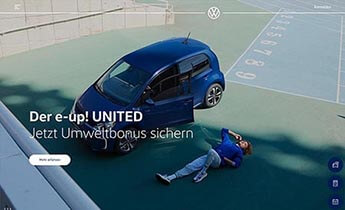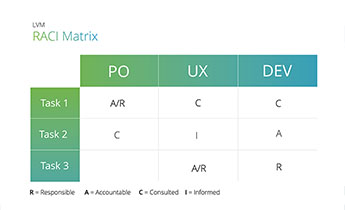Case Study CLAAS

CLAAS UX Strategy
Strategic consulting- UX strategy
- UX management
- Long-term partnership
- User-centered design

How many people does a single farmer in the US feed statistically (as of 2016)?
- 46
- 105
- 164
- 241
The correct answer is c). Isn't that remarkable? A single person whose work could feed almost 7x the employees of our agency (and our consumption of cereals is not to be underestimated... 😉). But 60 years ago, answer a) would have been correct. To be fair, usability.de didn't exist then... but at that point, the products from one farmer would have only been enough for about twice the number of our UX experts.
Revolution in agriculture
Thus, within 60 years, production output has increased dramatically. But how did this happen? In addition to improved varieties of grain and pesticides, technical progress in agricultural machinery is a major factor. One of the world's leading manufacturers of such machinery is CLAAS, a family-owned company based in Harsewinkel, Germany. Founded in 1913, CLAAS is the European market leader when it comes to selling modern combine harvesters.
So far, the topic of UX at CLAAS has not been able to keep up with the rapid pace of technical development. And that's where we come in. CLAAS approached us after reading our book "Quick Guide UX Management" and asked for support in spreading the right UX fertilizer at CLAAS. That was the beginning of a long-term and intensive collaboration on the topic of “UX Strategy @CLAAS”.

UX strategy @CLAAS
As in all our projects, we take a human-centered approach to strategy development - in this case, Claasian-centered. We therefore followed a classic user-centered design cycle of: understand, explore, design, and test.
A separate operational project was carried out in parallel to this strategic project. This allowed us to identify which methods and processes are already working well at CLAAS and where we need to take action. In turn, we used the findings to work on the strategy.
Understand
First, we needed to figure out how different stakeholders look at the topic of UX@CLAAS. What are the preconditions for our work? You could also ask: How fertile is the soil on which we are plowing? For this purpose, we conducted interviews with Claasians from different departments of the organization on different hierarchical levels.
For example, we were interested in:
- What does UX mean to you?
- How big of an impact do you have on how the UX of the products is?
- What obstacles do you see blocking a better UX at CLAAS?
- In your eyes, who is the right person to talk to about UX in the company?
During the interviews, we discovered that there was a good basic understanding of UX to build on in several organizational units. However, we were also able to identify clear barriers that were holding back a better UX at CLAAS.

Explore
Next, we came up with a number of ideas to overcome the hurdles we had identified. We like to call them “areas of potential” where CLAAS can develop.
Examples of such “areas of potential” are:
- Develop a shared goal or vision for UX
- Define responsibility for UX
- Build up UX skills
- Run all four phases of the human-centered design process in project
Together with the CLAAS project team, we decided on the areas of potential with highest priority. Which topics do we need to address first so that other related projects can build on them effectively?

Design
Once the areas of potential had been selected, we proceeded to the design phase. We invited stakeholders from different organizational areas once again and developed a prototype for working on the highest-priority areas of potential collaboratively. Prototype? But doesn't that only work for physical or digital products? We are convinced: No! The methodology is just as suitable for strategy prototypes, vision prototypes, communication prototypes, structure prototypes, role prototypes, training prototypes... the point was made, right? 😉 .......+prototype= ❤️
The main purpose of a prototype is to illustrate an idea in such a way that it can be tested and evaluated by users and stakeholders. We therefore took a concrete area of potential and developed a tangible solution that considered existing standards at CLAAS and yet took the necessary step in the direction of UX. True to the motto: same field, new machine. 🚜

Test
Let's get started with the field trial. We tested new methods, raised awareness in committees, did a lot of persuading and were able to celebrate our first successes. In the meantime, we can state: The harvest time has begun. For example, there is a clearly defined responsibility for UX in the company, which is also called “Corporate UX”. Processes are also gradually being changed so that user research, ideation, prototyping and testing are given sufficient space in development.
However, we continue to evaluate ideas to level up the UX maturity, because we want to separate the wheat from the chaff: What works well? What doesn't? If necessary, we iterate – Claasian-centered, of course.

What's next?
There are already many ideas for the next sowing, as we want to continue increasing the UX maturity level. Our goal is to continue building and expanding UX competencies, to make user research a matter of course in early project phases, to promote interdisciplinary collaboration, and to invite all Claasians to watch a user test in a livestream. We still have a lot of work to do and are looking forward to everything that comes along!

 Münster University of Applied Sciences: Inhouse-Training Personas
Münster University of Applied Sciences: Inhouse-Training Personas  Volkswagen AG: UX Strategy & Management
Volkswagen AG: UX Strategy & Management  LVM: UX Management Workshops
LVM: UX Management Workshops  Leibniz University Hanover: User-Centered Design
Leibniz University Hanover: User-Centered Design